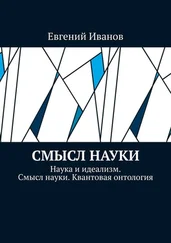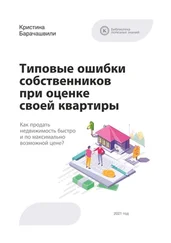144 IREG Ranking Audit Manual , 2011, Bruxelles, IREG; документ доступен по адресу: http://www.iregobservatory.org/pdf/ranking_audith_audit.pdf.
145Pascal Pansu, Nicole Dubois, Jean-Léon Beauvois, Dis-moi qui te cite, et je te dirai ce que tu vaux. Que mesure vraiment la bibliométrie? (Grenoble: Presses universitaires de Grenoble, 2013), p. 93.
146См.: Paul Lazarsfeld, “Des concepts aux indices empiriques,” in Raymond Boudon, Paul Lazarsfeld (dir.), Le Vocabulaire des sciences sociales. Concepts et indices (Paris: Mouton, 1971), pp. 27–36.
147См.: J. R. Cole, S. Cole, Social Stratification in Science, op. cit.
148По этому вопросу см.: Vincent Larivière, Éric Archambault, Yves Gingras, Étienne Vignola-Gagné, “The place of serials in referencing practices: comparing natural sciences and engineering with social sciences and humanities,” in Journal of the American Society for Information Science and Technology , 57, June 2006, pp. 997–1004; Éric Archambault, Étienne Vignola-Gagné, Grégoire Côté, Vincent Larivière, Yves Gingras, “Benchmarking scientific output in the social sciences and humanities: the limits of existing databases,” in Scientometrics , 68, 2006, pp. 329–342.
149См.: Jean-Charles Billaut, Denis Bouyssou, Philippe Vincke, “Should you believe in the Shanghai ranking?” in Scientometrics , 84, 2010, pp. 237–263.
150См.: http://en.wikipedia.org/wiki/Eigenfactor.
151В этом смысле абсурдно утверждать, что «образование должно всегда ориентироваться на крайне волатильный рынок труда», поскольку образование занимает годы, а это, разумеется, абсолютно несовместимо с «волатильностью» рынка! Отсюда вся важность фундаментального образования, которое преодолевало бы эту «волатильность»… См.: “Les cahiers de la compétitivité. Spécial Enseignement supérieur,” p. II, вставка в Le Monde от 21 мая 2008 г.
152См. прекрасный образец критики в: Malcolm Gladwell, “The order of things. What college rankings really tell us,” in The New Yorker , 14–21 February, 2011, pp. 68–75. См. более подробно о Шанхайском рейтинге в: Yves Gingras, “Le classement de Shanghai n’est pas scientifique,” in La Recherche , 430, May, 2009, pp. 46–50.
153Eleanor S. Abaya, “Promotion et notoriété sont devenues une nécessité pour les universités d’aujourd’hui,” Affaires universitaires , 5 août 2008, доступно по адресу: http://www.affairesuniversitaires.ca/promotion-et-notoriete-sont-devenues-une-necessite-pour-les-universites-daujourdhui.aspx.
154См.: Martin Van Der Werf, “Clemson assails allegations that it manipulates ‘U. S. News’ rankings,” in Chronicle of Higher Education, 4 June, 2009, доступно по адресу: http://chronicle.com/article/Clemson — Assails — Allegations/47295/.
155 The Ottawa Citizen , 23 April 2006. Maclean’s — канадский иллюстрированный журнал, в котором ежегодно публикуются рейтинги канадских университетов.
156D. D. Guttenplan, “Questionable science behind academic rankings,” in New York Times , 15 November, 2010, доступно по адресу: http://www.nytimes.com/2010/11/15/education/15iht-educLede15.html?pagewanted=all&_r=0.
157http://www.topuniversities.com/node/4414/ranking-details/world-niversity-rankings/2012.
158См.: Martin Enserink, “Who ranks the university rankers?” in Science , 317, 24 August, 2007, pp. 1026–1028.
159Mathilde Munos, “Classement de Shanghai des universités: ‘La France grignote des places’ (Fioraso),” in France Info , 15 August, 2013; http://www.franceinfo.fr/education-jeunesse/les-invites-de-france-info/classement-de-shanghai-des-universites-la-france-grignote-des-places-fiora.
160Категория «высокоцитируемые исследователи» ( highly cited researchers ) была введена для обозначения 1 % наиболее часто цитирующихся статей, учитываемых в индексах научного цитирования (рассчитывается за определенный период для различных областей науки).
161Yudhijit Bhattacharjee, “Saudi Universities Offer Cash in Exchange for Academic Prestige,” Science 334, December 9, 2011, pp. 1344–1345. См. также многочисленные реакции в: Science 335, March 2, 2012, pp. 1040–1042 и на их сайте, http://comments.sciencemag.org/content/10.1126/science.334.6061.1344, дата доступа: 15 декабря 2015 г.
162Здесь я ссылаюсь на публикацию Thomson Reuters “2014 HCR as of September 8, 2015,” см.: http://highlycited.com, дата доступа: 21 декабря 2015 г.
163Étienne Gless, “Ipag: Les secrets d’une progression ‘fulgurante’ en recherche,” L’Etudiant.fr, October 9, 2014, http://www.letudiant.fr/educpros/enquetes/ipag-les-secrets-d-une-progression-fulgurante-en-recherche.html.
164EFMDP Quality Improvement System, EQUIS Standards and Criteria , January 2014, p. 64, https://www.efmd.org/images/stories/efmd/EQUIS/2014/EQUIS_Standards_and_Criteria.pdf.
165См.: Sébastien Mosbah-Natanson, Yves Gingras, “The globalization of social sciences? Evidence from a quantitative analysis of 30 years of production, collaboration and citations in the social sciences (1980–2009),” in Current Sociology , 62 (5), 2014, pp. 626–646.
166William Bruneau, Donald C. Savage, Counting Out the Scholars: How Performance Indicators Undermine Universities and Colleges (Toronto: James Lorimer, 2002).
167Stanford G. Thatcher, “The Crisis in Scholarly Communication,” in Chronicle of Higher Education, 1995, March 3, B1–B2; Carol Tenopir, Donald W. King, “Trends in Scientific Scholarly Journal Publishing in the United States,” in Journal of Scholarly Publishing , 1997, 28 (3), pp. 135–170; Glenn S. McGuigan, Robert D. Russel, “The business of academic publishing: A strategic analysis of the academic journal publishing industry and its impact on the future of scholarly publishing,” in Electronic Journal of Academic and Special Librarianship , 9 (3), http://southernlibrarianship.icaap.org/content/v09n03/mcguigan_g01.html; Vincent Larivière, Stefanie Haustein, and Philippe Mongeon, “The Oligopoly of Academic Publishers in the Digital Era,” in PLoS ONE , 2015, 10 (6), e0127502.
Читать дальше
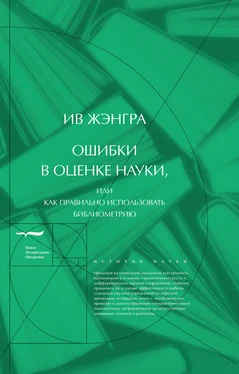



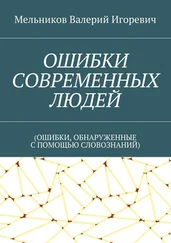
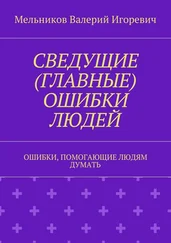
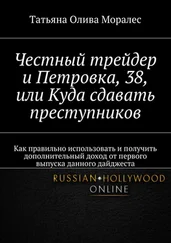
![Ив Жангра - Ошибки в оценке науки, или как правильно использовать библиометрию [калибрятина]](/books/390964/iv-zhangra-oshibki-v-ocenke-nauki-ili-kak-pravilno-thumb.webp)

